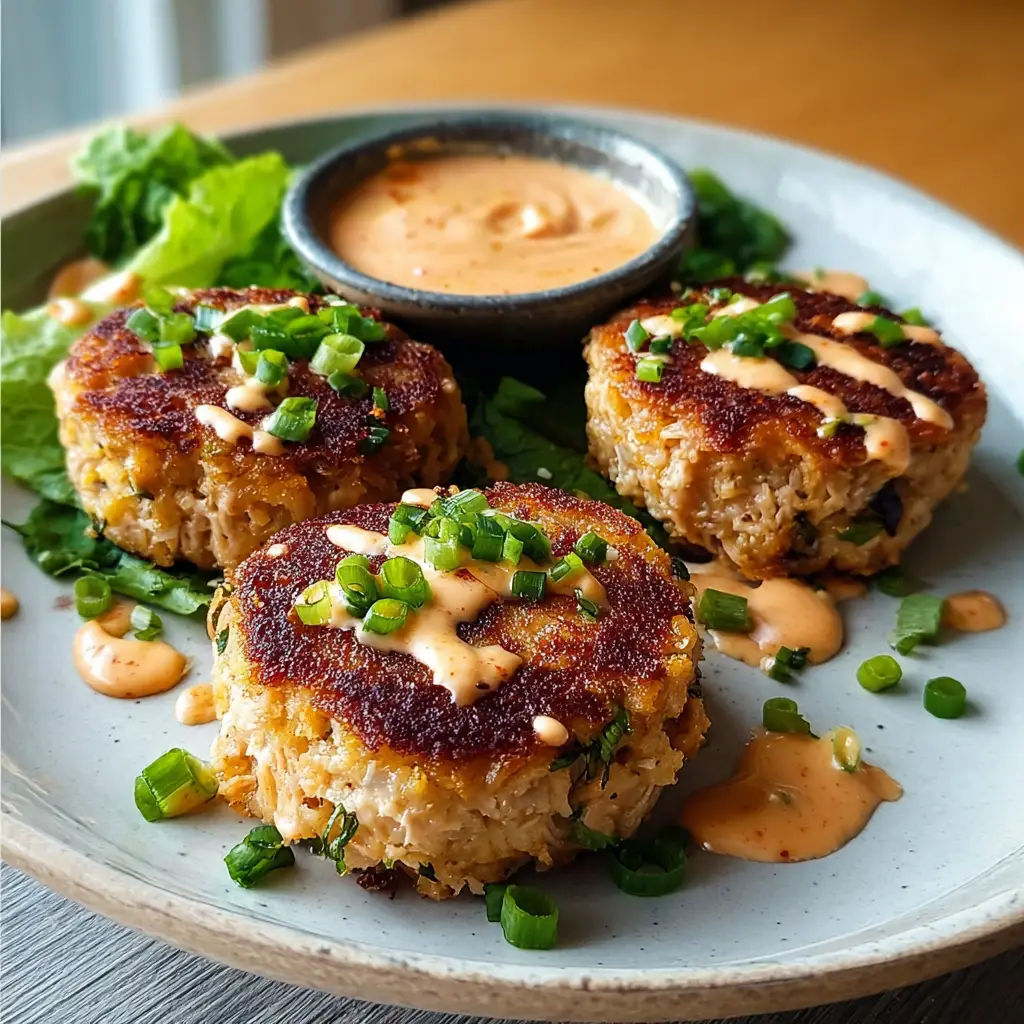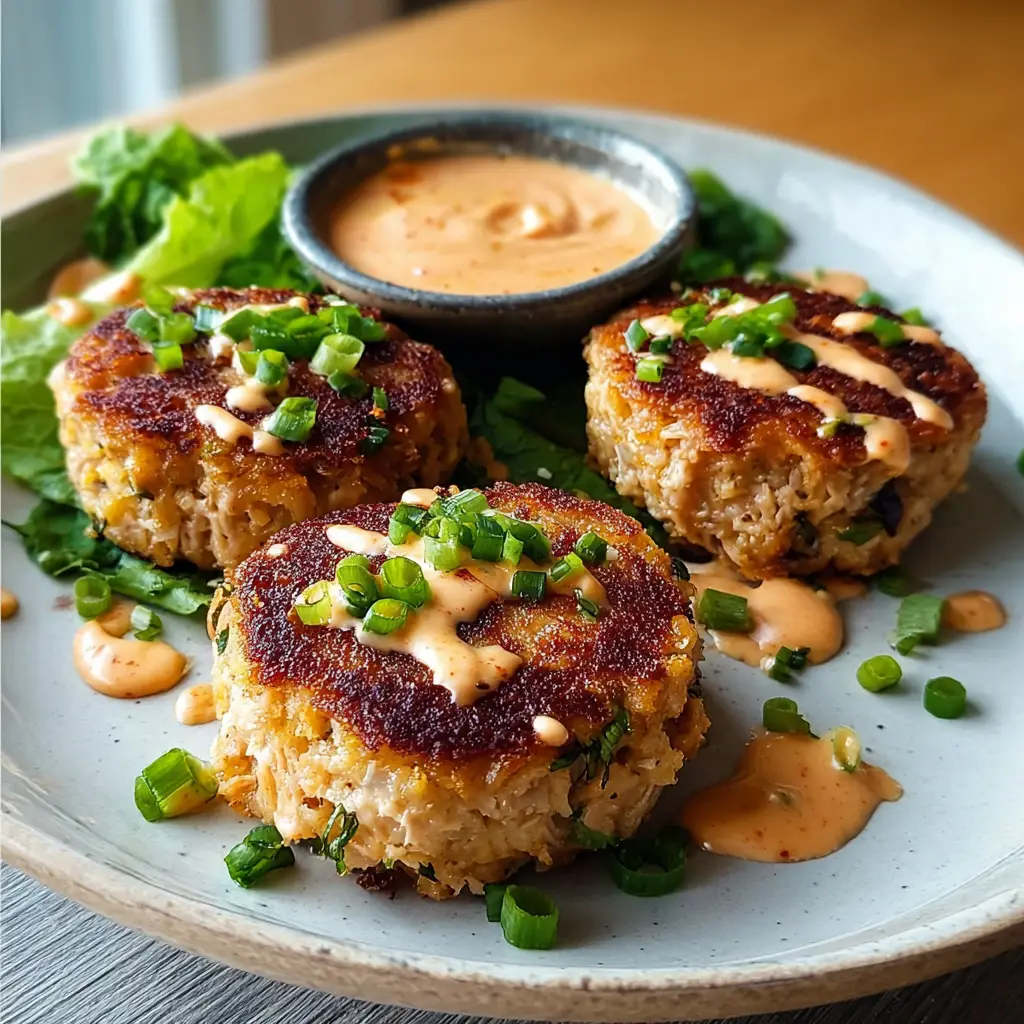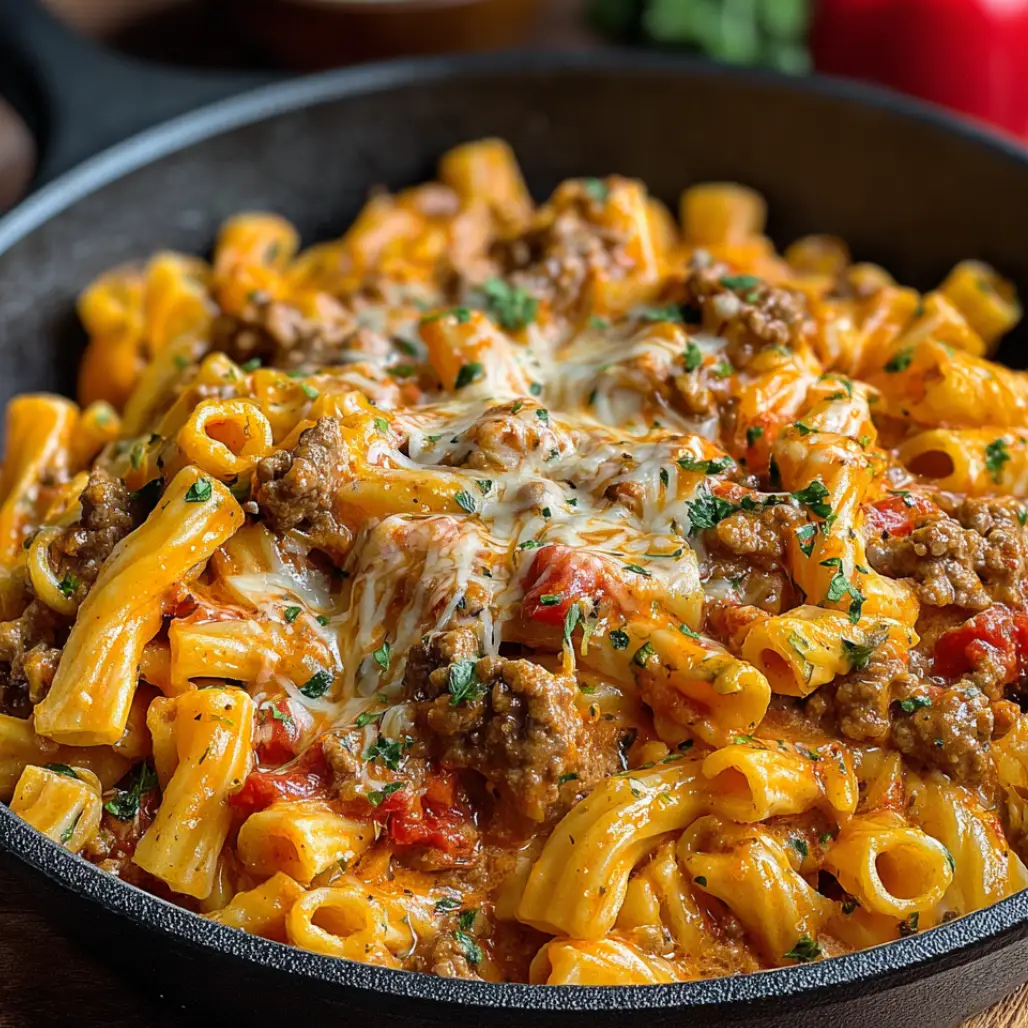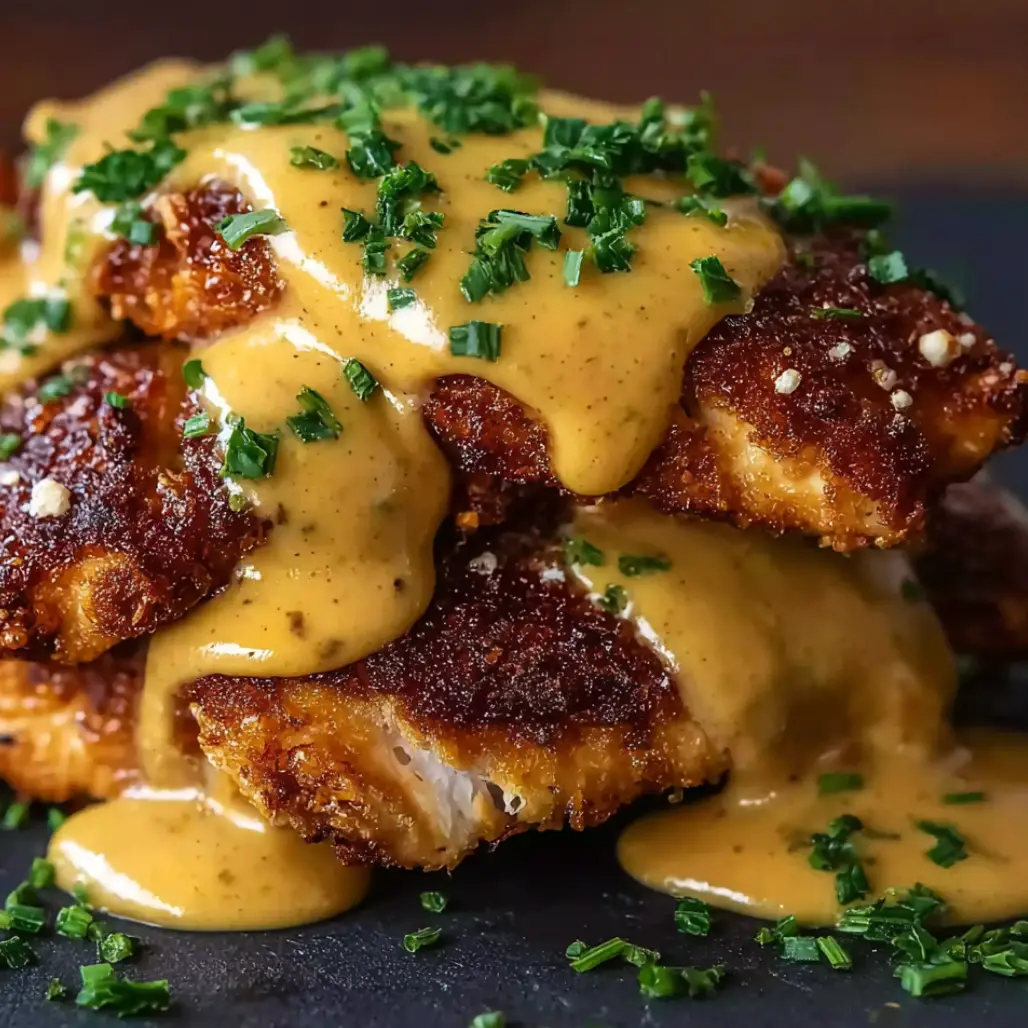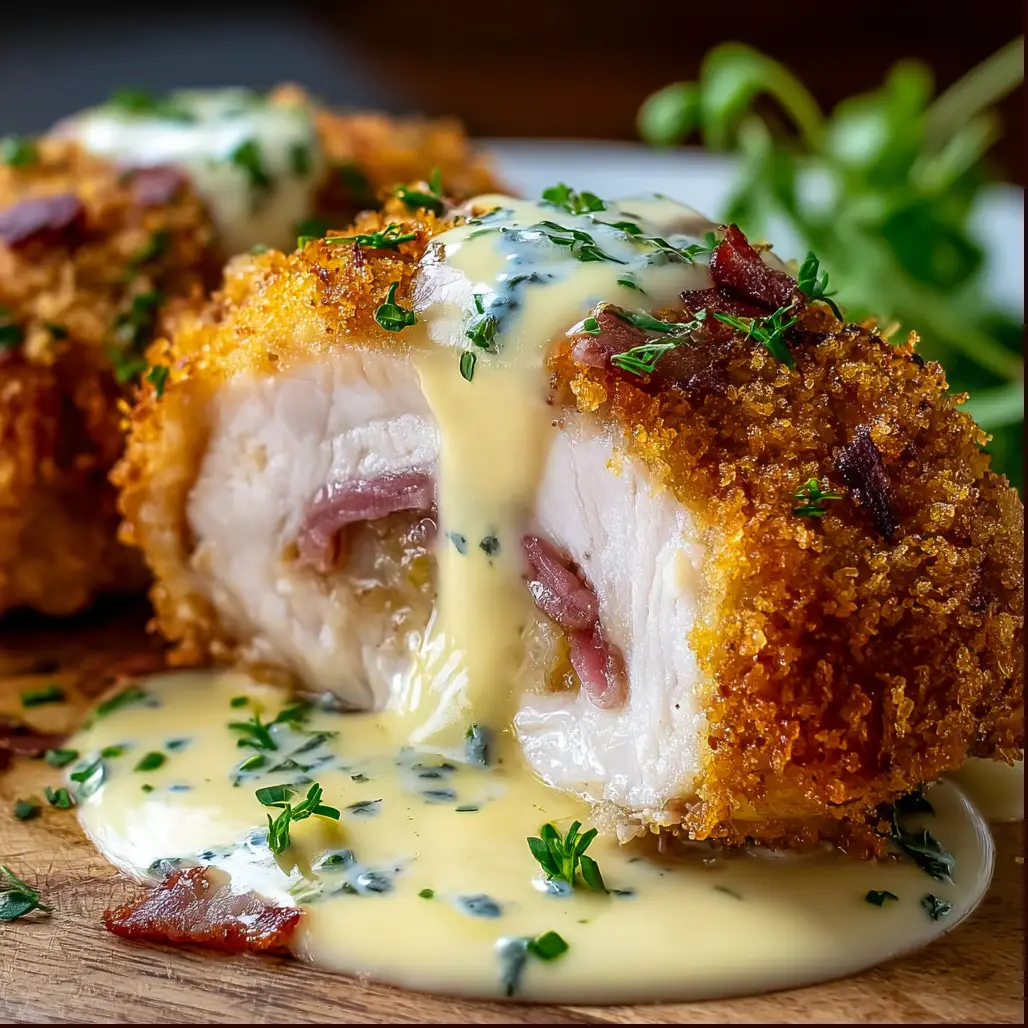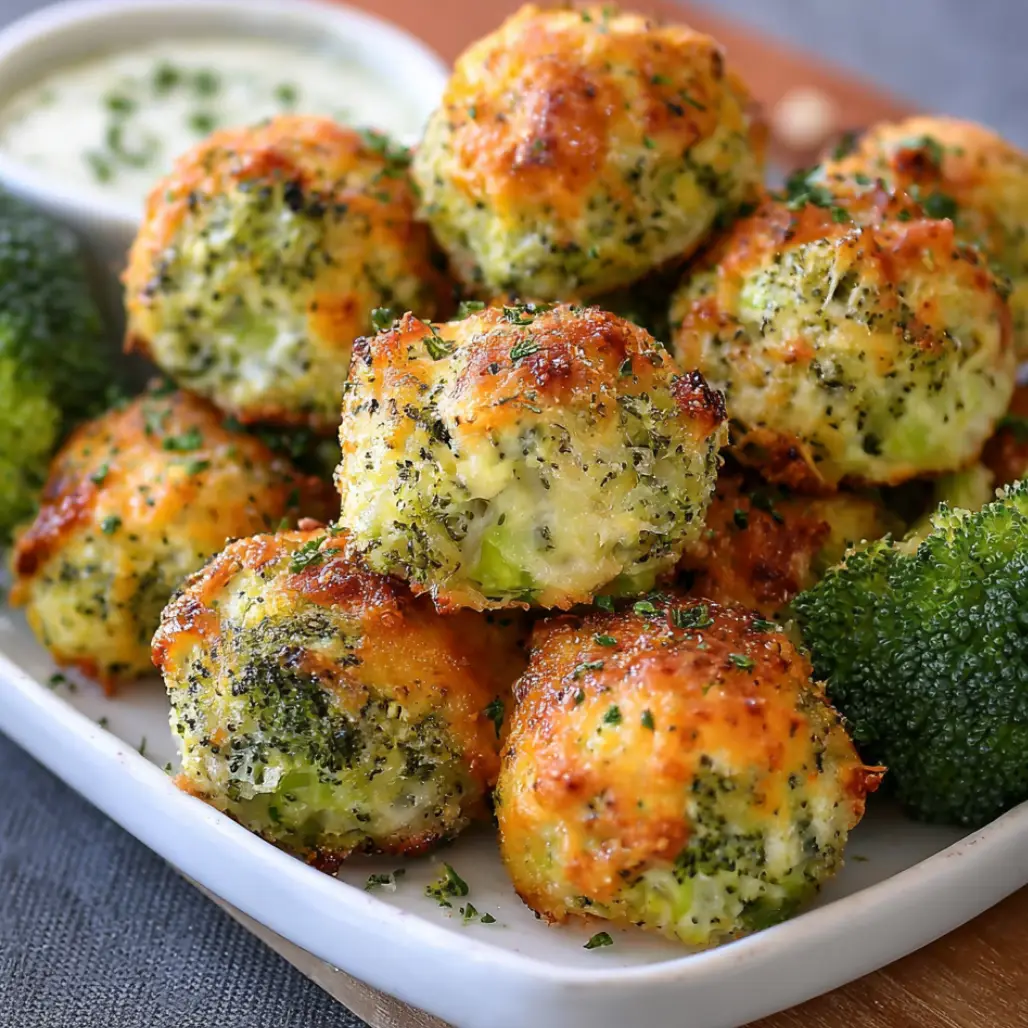| Prep Time: 25 minutes | Cook Time: 18 minutes | Total Time: 43 minutes | Serves: 6 |
Elevate your culinary repertoire with these sophisticated Asian tuna cakes with spicy mayo that demonstrate how simple pantry ingredients can be transformed into restaurant-quality dishes through the artful application of traditional Asian cooking techniques and flavor combinations because this recipe showcases the fundamental principle that exceptional cuisine emerges from understanding how individual components work together harmoniously. These expertly seasoned patties offer a masterclass in texture and flavor development, combining the umami-rich depth of fermented seasonings with the bright freshness of herbs and aromatics, while the accompanying spicy mayo provides a luxurious counterpoint that elevates the entire dining experience to new heights of satisfaction and sophistication.
The Culinary Excellence Behind This Asian-Inspired Creation
What distinguishes these exceptional fish cakes from ordinary preparations is their sophisticated understanding of Asian flavor architecture because each ingredient has been carefully selected and balanced to contribute specific characteristics that build upon each other to create something far greater than the sum of its parts. The careful interplay between sweet, salty, spicy, and umami elements creates a complex flavor profile that evolves throughout the eating experience, while the expert handling of textures ensures that every bite delivers the perfect contrast between crispy exterior and tender, flavorful interior that defines memorable cuisine.
Premium Ingredients for Authentic Asian Character
4 cans premium albacore tuna, packed in water for optimal texture control 3 large organic eggs, room temperature for better binding 3/4 cup Japanese panko breadcrumbs, plus additional for coating 6 green onions, both white and green parts finely sliced 3 garlic cloves, minced to release maximum aromatic compounds 2 tablespoons fresh ginger, microplaned for intense flavor distribution 3 tablespoons premium soy sauce, naturally brewed for complex depth 2 tablespoons toasted sesame oil, cold-pressed for nutty richness 1 tablespoon rice wine vinegar, seasoned variety for balanced acidity 2 teaspoons sriracha chili sauce, or to taste for heat preference 1/3 cup cake flour, for lighter texture and better binding 1/3 cup fresh cilantro, roughly chopped for bright herbal notes 2 tablespoons fresh mint, chiffonade cut for aromatic complexity 1 1/2 teaspoons sea salt, plus additional for finishing 3/4 teaspoon white pepper, freshly ground for delicate heat 1/4 cup vegetable oil, high smoke point for optimal frying 2/3 cup premium mayonnaise, Japanese-style Kewpie preferred 3 tablespoons gochujang, Korean chili paste for complex heat 2 tablespoons fresh lime juice, plus zest for citrus brightness 1 tablespoon mirin, for subtle sweetness and depth 1 teaspoon black sesame seeds, for garnish and nutty flavor
Mastering the Art of Asian Flavor Development
Creating exceptional results requires understanding the fundamental principles of Asian cooking because successful flavor development depends on proper layering of aromatics, careful balance of contrasting elements, and respectful treatment of each ingredient to preserve its essential character while encouraging harmonious integration. The key to achieving professional-quality results lies in recognizing that Asian cuisine celebrates the natural flavors of ingredients while enhancing them through thoughtful seasoning and technique, rather than masking or overwhelming them with heavy-handed preparation methods that diminish rather than elevate the final dish.
Comprehensive Step-by-Step Preparation Guide
Establishing the Foundation with Perfect Tuna Preparation
Begin by thoroughly draining the premium tuna in a fine-mesh colander, gently pressing with clean paper towels to extract maximum moisture because excess liquid is the primary culprit behind fish cakes that fall apart during cooking or develop unpleasant soggy textures that compromise the eating experience. Transfer the properly drained tuna to a large mixing bowl and use clean hands or a fork to break it into uniform, bite-sized flakes that will distribute evenly throughout the mixture, ensuring consistent texture and flavor in every portion of your finished Asian tuna cakes with spicy mayo.
Professional Tip: Allow the drained tuna to sit in the colander for 10 minutes while preparing other ingredients, as this additional time helps remove residual moisture that could affect binding.
Key Points: Thorough moisture removal is crucial for structural integrity, while proper flaking ensures even distribution of protein throughout your Asian tuna cakes with spicy mayo mixture.
Building Complex Aromatics and Seasonings
Combine the room temperature eggs, panko breadcrumbs, sliced green onions, minced garlic, grated ginger, soy sauce, sesame oil, rice wine vinegar, sriracha, cake flour, cilantro, mint, salt, and white pepper with the prepared tuna, mixing gently but thoroughly until all ingredients are evenly distributed because overmixing can develop the proteins too much and create dense, tough patties instead of the light, tender texture that characterizes excellent fish cakes. The mixture should feel cohesive when pressed together but maintain a slightly loose, airy quality that will translate into perfect texture after cooking.
Professional Tip: Mix the wet and dry ingredients separately before combining with the tuna to ensure even distribution and prevent overmixing of the delicate fish.
Key Points: Gentle mixing preserves texture while ensuring flavor distribution, and proper consistency indicates optimal moisture balance for successful Asian tuna cakes with spicy mayo formation.
Shaping with Precision and Purpose
Using a portion scoop or large spoon, divide the mixture into 12 equal portions and shape each into neat patties approximately 2.5 inches in diameter and 1/2 inch thick because uniform sizing ensures even cooking and professional presentation that reflects attention to detail and culinary craftsmanship. Place the shaped patties on a parchment-lined baking sheet and refrigerate for at least 20 minutes to allow the binding agents to work effectively while firming the texture for easier handling during the cooking process.
Professional Tip: Wet your hands slightly when shaping to prevent sticking, and use a light touch to maintain the airy texture that creates tender Asian tuna cakes with spicy mayo.
Key Points: Consistent portioning ensures even cooking results, while adequate chilling time allows proper binding for stable patties that won’t fall apart during cooking.
Crafting the Signature Spicy Mayo Accompaniment
While the patties chill, prepare the essential spicy mayo by whisking together the premium mayonnaise, gochujang, lime juice, lime zest, and mirin in a small bowl until completely smooth and well integrated because this complex sauce provides the perfect bridge between the savory fish cakes and the palate’s desire for cooling, creamy contrast. Taste carefully and adjust the heat level and seasoning balance to complement your personal preferences, remembering that the sauce should enhance rather than overpower the delicate flavors of the fish.
Professional Tip: Allow the spicy mayo to rest at room temperature for 15 minutes before serving to let the flavors meld and develop greater complexity and depth.
Key Points: Proper emulsification creates smooth texture, while balanced seasoning ensures the sauce complements rather than competes with your Asian tuna cakes with spicy mayo.
Executing Perfect Pan-Frying Technique
Heat the vegetable oil in a large, heavy-bottomed skillet over medium heat until it shimmers slightly but doesn’t smoke, then carefully place the chilled patties in the pan without overcrowding because proper oil temperature and adequate space between patties ensures even browning and prevents steaming that would compromise the desired crispy exterior. Cook undisturbed for 4-5 minutes until a golden crust forms, then flip carefully with a thin spatula and cook for another 3-4 minutes until both sides achieve beautiful golden-brown color and crispy texture.
Professional Tip: Resist the urge to press down on the patties while cooking, as this compacts the texture and forces out flavorful juices that contribute to the tender interior.
Key Points: Proper oil temperature and patient cooking create ideal crust formation, while careful handling preserves the delicate structure of your Asian tuna cakes with spicy mayo during the cooking process.
Finishing with Professional Presentation Techniques
Remove the cooked patties from the skillet and drain briefly on paper towels to eliminate excess oil without cooling them completely, then arrange on warmed serving plates and garnish thoughtfully with black sesame seeds, additional cilantro leaves, and lime wedges because attractive presentation demonstrates respect for both the dish and the diners while enhancing the overall dining experience. Serve the spicy mayo alongside in small ramekins or drizzle artistically over the patties, allowing diners to customize their experience while maintaining the visual impact of professional plating.
Professional Tip: Warm your serving plates in a low oven before plating to help maintain optimal serving temperature and demonstrate professional attention to detail.
Key Points: Proper draining maintains texture while preserving temperature, and thoughtful presentation elevates the perceived value and enjoyment of your Asian tuna cakes with spicy mayo.
Advanced Techniques for Culinary Excellence
Professional chefs emphasize the importance of mise en place when preparing complex dishes because having all ingredients properly prepared and organized before beginning cooking ensures smooth execution and optimal results throughout the process. Pay particular attention to the quality and freshness of your aromatics like ginger and garlic, as these foundational flavors will significantly impact the final character of your dish, and always taste and adjust seasonings at multiple points during preparation to build layers of flavor that create depth and complexity.
Creative Variations and Seasonal Adaptations
Explore regional Asian variations by incorporating ingredients like Japanese miso paste for umami depth, Thai fish sauce and lemongrass for Southeast Asian character, or Chinese five-spice and hoisin sauce for Cantonese-inspired flavors that showcase the versatility of this basic technique. Consider seasonal adaptations using different fresh herbs like Thai basil in summer, or adding finely diced water chestnuts for textural contrast, demonstrating how fundamental techniques can be adapted to reflect changing seasons and personal taste preferences.
Sophisticated Pairing Recommendations for Complete Meals
These elegant patties pair beautifully with fresh, vibrant preparations from our dinner recipes collection, where complementary Asian-inspired dishes create cohesive dining experiences that transport diners through a journey of related flavors and techniques. Consider serving alongside pickled vegetables, steamed rice, or Asian-style coleslaws that provide textural and flavor contrasts, or explore our flavored dips marinades selection for additional sauce options that can enhance and vary the dining experience.
Expanding Your Asian Culinary Knowledge Base
Deepen your understanding of Asian cooking principles by exploring our comprehensive dessert recipes collection, where similar attention to balance and harmony creates memorable sweet conclusions to Asian-inspired meals. The techniques and flavor principles learned through mastering these fish cakes translate beautifully to other Asian preparations, building a foundation of knowledge that enhances your overall culinary competence and confidence in working with these exciting and rewarding flavor profiles.
Optimal Storage and Preservation Methods
Maintain the quality of leftover cooked patties by storing them in airtight containers in the refrigerator for up to four days, where they retain excellent flavor and can be gently reheated in a skillet to restore crispiness because proper storage and reheating techniques preserve both taste and texture while ensuring food safety. The prepared spicy mayo keeps refrigerated for up to one week in a covered container, making it a versatile condiment for other dishes, while uncooked formed patties can be frozen between layers of parchment paper for up to two months when properly wrapped.
Understanding the Science of Asian Flavor Chemistry
The success of Asian cuisine relies heavily on understanding umami and how fermented ingredients like soy sauce and gochujang contribute complex savory flavors that enhance rather than mask the natural characteristics of primary ingredients because these compounds work synergistically with proteins to create deeper, more satisfying flavor experiences. The careful balance of acids, fats, and aromatics creates a harmonious flavor profile that stimulates multiple taste receptors simultaneously, explaining why properly executed Asian dishes feel so complete and satisfying despite often using relatively simple ingredient lists.
Troubleshooting Common Preparation Challenges
When patties break apart during cooking, the issue usually stems from insufficient binding or excess moisture, easily corrected by adding more breadcrumbs and ensuring thorough tuna drainage in future preparations, while proper chilling time allows binding agents to work effectively. If flavors seem muted or unbalanced, remember that Asian cuisine relies on building layers of taste through multiple ingredients rather than depending on any single dominant flavor, so taste carefully and adjust seasonings to achieve the complex balance that characterizes excellent Asian cooking.
Additional Creative Applications and Inspirations
Explore how these flavor principles apply to other preparations by visiting our breakfast favorites collection, where similar techniques create exciting morning meals that break away from traditional patterns while maintaining broad appeal. The seasoning combinations and preparation methods learned here can enhance numerous other dishes, demonstrating how mastering fundamental techniques opens doors to countless creative possibilities that keep cooking exciting and rewarding for both cook and diners.
Conclusion and Culinary Reflection
These Asian tuna cakes with spicy mayo represent far more than a simple recipe because they demonstrate how understanding cultural flavor principles and proper technique can transform ordinary ingredients into extraordinary dining experiences that celebrate both tradition and innovation. The careful balance of textures, flavors, and presentation techniques creates a dish that satisfies on multiple levels while teaching valuable lessons about Asian cooking that enhance your overall culinary knowledge and confidence, making this preparation an excellent investment in both immediate enjoyment and long-term skill development for passionate home cooks.

